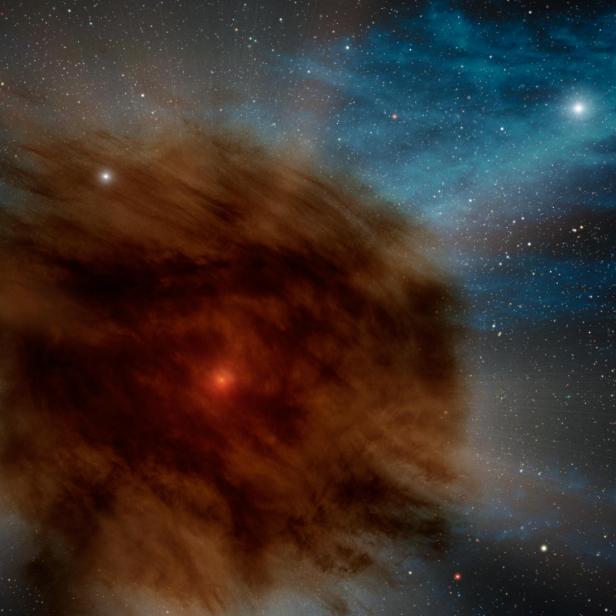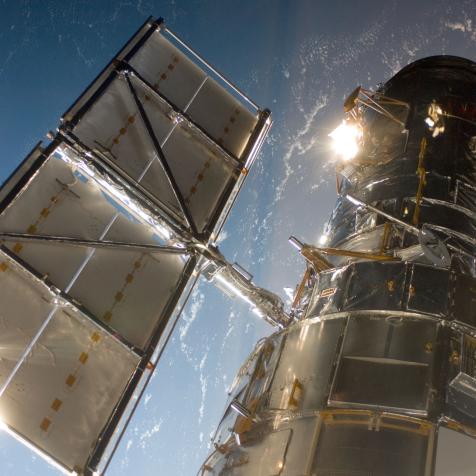
NASA/JPL-Caltech
There’s a Hole in Our Galaxy

Folks, we just found a 500-lightyear-wide hole in our galaxy. Fess up: which one of you did it?
If you look in the direction of the Perseus and Taurus constellations, you’ll see lots of pretty stars. Within them lies a star-forming region, which is made up of huge collections of gas and dust. That gas and dust are actively and enthusiastically collapsing in on itself, fragmenting into hundreds of different clumps. Each clump continues to cool and contract, eventually reaching the critical densities needed to ignite nuclear fusion and give birth to a star.
Up until recently, this star-forming region looked like one impressively large lump. But those observations were only in two dimensions – they didn’t capture the full three-dimensional structures of the regions.

Rogelio Bernal Andreo
The borders of the constellations Perseus and Taurus.
And then came Gaia, the European Space Agency super-star-searching satellite, which has recently completed a full three-dimensional census of over a billion stars within the Milky Way (which is still less than 1% of all the stars in our galaxy, but hey it’s a good start).
That new census has revealed that the star-forming region straddling Perseus and Taurus is actually two separate clumps of gas, with a massive void spanning 500 lightyears sitting between them.
What could possibly be powerful enough to drive a hole in our galaxy?
I won’t keep you in suspense: it’s a supernova. When massive stars die, they turn themselves inside out in an explosion that’s over and done with in less than a second. But when they go, they release more energy than all the stars in an entire galaxy combined. They also fling their own star-guts out into interstellar space in the form of a massive, nearly lightspeed shockwave.
.jpg.rend.hgtvcom.861.646.suffix/1635178267506.jpeg)
NASA/ESA/HEIC and The Hubble Heritage Team (STScI/AURA)
A violent and chaotic-looking mass of gas and dust is seen in this Hubble Space Telescope image of a nearby supernova remnant.
Astronomers aren’t sure if one impressive explosion or a series of slightly-less-impressive supernovae carved out the void. But as the shockwave of the supernova expanded, it collided with the surrounding clouds of gas and dust. That collision was enough to trigger the splintering and collapsing of those regions into the frenzy of star formation that we see today.
The void between Perseus and Taurus is a great example of the interplay of destruction and creation happening all throughout our universe. In order to make stars, clouds of gas and dust need to get stirred up a little, and the best way to shake things up is with a little blast here and there.
What’s more, those supernovas create most of the heavier elements on the periodic table. When their shockwaves expand, they enrich the surrounding medium, seeding it with heavy elements. Those elements are needed to grow planets – and grow life.

Barcroft Media
Lunar soil sample.
Our own solar system came from a similar situation. Measurements of radioactive elements found in Lunar soil samples and meteoroids – leftover from the formation of the solar system – tell us that a supernova triggers the collapse of our own proto-solar gas cloud. The elements surrounding you and within you were once forged in those cataclysmic fires billions of years ago.
And now we get to watch the process unfold again, between Perseus and Taurus.
Dive Deeper into our Galaxy
Journey Through the Cosmos in an All-New Season of How the Universe Works
The new season premieres March 24 on Science Channel and streams on discovery+.




















